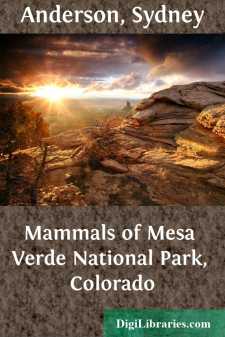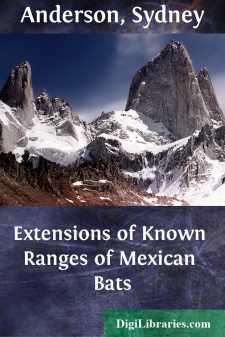Categories
- Antiques & Collectibles 13
- Architecture 36
- Art 48
- Bibles 22
- Biography & Autobiography 816
- Body, Mind & Spirit 145
- Business & Economics 28
- Children's Books 17
- Children's Fiction 14
- Computers 4
- Cooking 94
- Crafts & Hobbies 4
- Drama 346
- Education 58
- Family & Relationships 59
- Fiction 11834
- Foreign Language Study 3
- Games 19
- Gardening 17
- Health & Fitness 34
- History 1378
- House & Home 1
- Humor 147
- Juvenile Fiction 1873
- Juvenile Nonfiction 202
- Language Arts & Disciplines 89
- Law 16
- Literary Collections 686
- Literary Criticism 179
- Mathematics 13
- Medical 41
- Music 40
- Nature 179
- Non-Classifiable 1768
- Performing Arts 7
- Periodicals 1453
- Philosophy 66
- Photography 2
- Poetry 897
- Political Science 203
- Psychology 45
- Reference 154
- Religion 516
- Science 126
- Self-Help 85
- Social Science 82
- Sports & Recreation 34
- Study Aids 3
- Technology & Engineering 59
- Transportation 23
- Travel 463
- True Crime 29
Our website is made possible by displaying online advertisements to our visitors.
Please consider supporting us by disabling your ad blocker.
Subspeciation in the Meadow Mouse, Microtus montanus, in Wyoming and Colorado
by: Sydney Anderson
Description:
Excerpt
Microtus montanus reaches the eastern limits of its geographic distribution in Wyoming and Colorado. There the mountains, but in general not the lowlands, are occupied by this species. A certain minimum of moisture may be of direct importance to the mouse and certainly is indirectly important, because certain hydrophytic or mesophytic grasses used by the mouse for food, for protection from enemies, and for shelter from the elements are dependent on the moisture. Areas suitable for Microtus montanus are separated by deserts that are dominated by sagebrush and other xerophytic plants or by forests or rocky exposures at higher altitudes. A relatively small percentage, probably less than ten per cent, of the total area even in the more favorable parts of the range of the species is suitable for occupancy. In these mice, as in other microtines (Elton, 1942; Piper, 1909), there are seasonal, and irregularly multiannual fluctuations in population density, which sometimes are extreme. Consequently the mice at some times seem to be absent from suitable habitats, and at some other times occur there in amazingly large numbers.
Because the species is broken up into partly isolated, or at times completely isolated, colonies or local populations it may be supposed that various evolutionary forces such as selection and random genetic drift operate to foster variation. The degree to which racial distinction is attained may depend upon these forces and the time available. In Microtus montanus in the eastern Rocky Mountains the degree of subspecific distinction is not great.
The study here reported upon is based on 1,187 specimens of Microtus montanus from Wyoming, Colorado, Idaho and Montana, and on work in the field. I spent approximately four months in the field in this area, in the summers of 1950, 1951, and 1952. The specimens studied were arranged according to localities and the larger series were compared statistically. Each of two series, totaling 136 specimens, was studied intensively to ascertain the kind and range of variation within single populations. Twenty-seven measurements, various proportions based on these measurements, and differences in color were analyzed. Fifteen characters, judged to be most significant, were selected for use in comparing all series. In addition, certain characters that can not be expressed easily by measurements, such as inflation of the auditory bullae and the curvature of the zygomatic arch, were observed. The studies by A. B. Howell (1924) of variation in Microtus montanus yosemite Grinnell in California and those by O. B. Goin (1943) of Microtus pennsylvanicus pennsylvanicus (Ord) were useful. The external measurements are from the collectors' field labels. The measurements of the skull all were taken with dial calipers reading to a tenth of a millimeter. The anteroposterior measurements of the skull all were taken along the shortest line between the points specified below and are not necessarily along a line parallel to the long axis of the skull. These measurements were taken on the left side of the skull whenever possible. Some of the skulls are damaged and therefore some measurements could not be taken and are omitted in the computations. Measurements are in millimeters.
The results of these studies were submitted to the Department of Zoology and the Graduate School of the University of Kansas in partial fulfillment of the requirements for the degree of Master of Arts (1952) and are available in manuscript form at the Museum of Natural History and the library of the University of Kansas.
Explanation of Measurements
Caudal index.—the length of the tail expressed as a percentage of the length of the head and body. The length of the head and body is the collector's measurement of total length less the length of the tail.
Cranial Measurements of Length.
Condylobasilar length.—from the exoccipital condyle to the most posterior point on the border of the alveolus of the upper incisor.
Alveolobasilar length.—from the posterior border of the alveolus of the third upper molar to the posterior border of the alveolus of the incisor....








